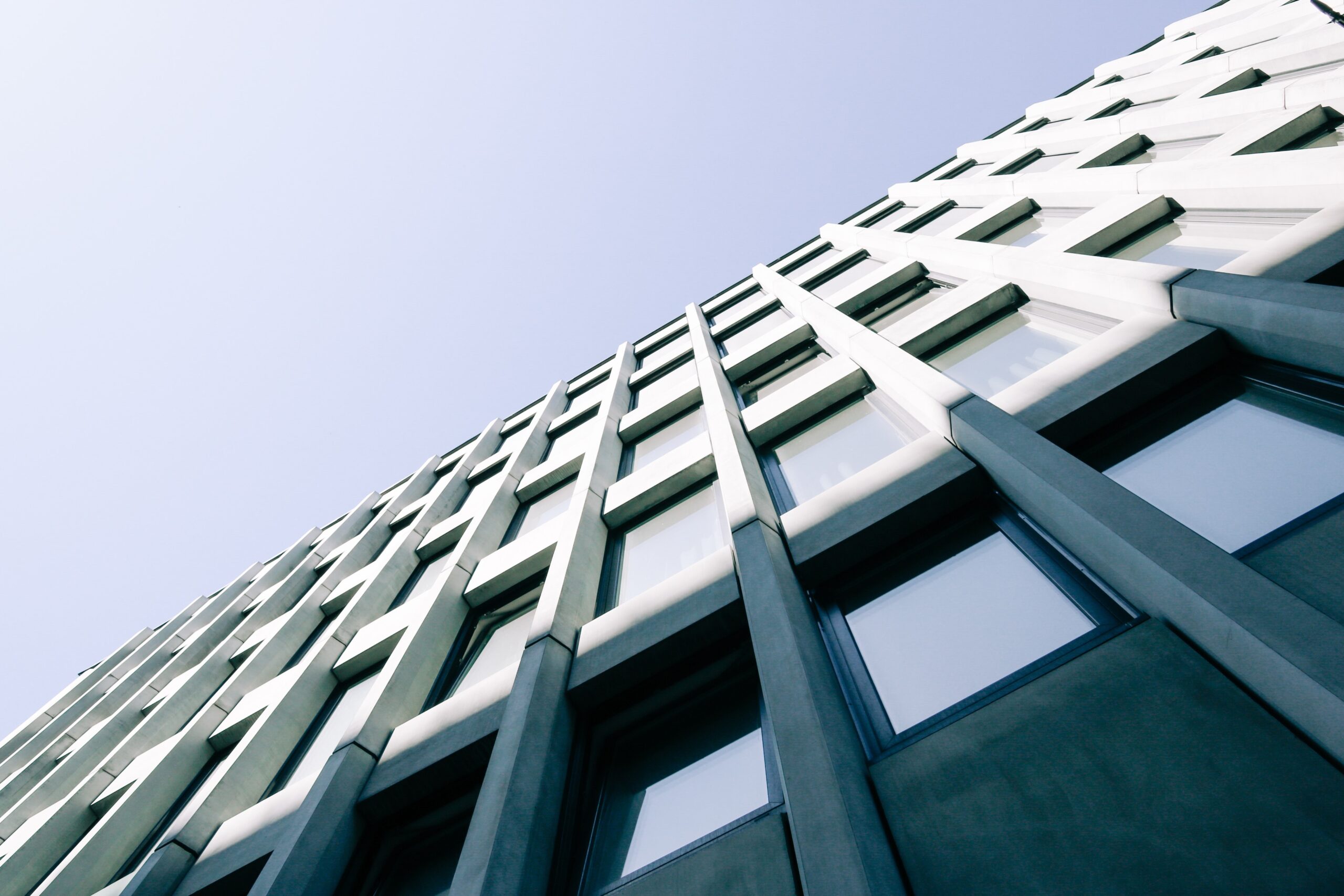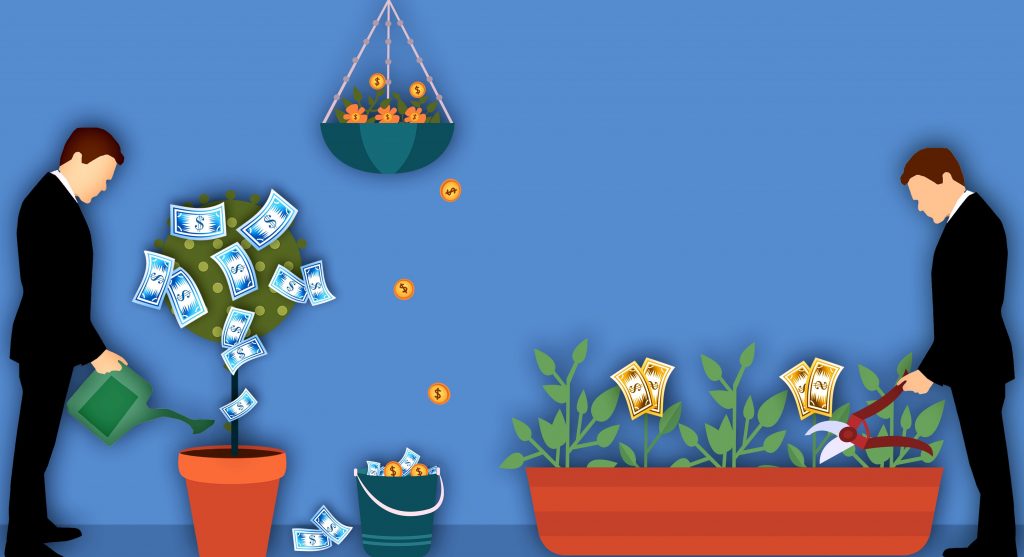The European Bank for Reconstruction and Development has released a document titled “Egypt Country Strategy 2022-2027” that outlines the Bank’s near-term investment plans.
Egypt has long been an attractive investment destination for the European Bank for Reconstruction and Development (EBRD). In October 2020, the Bank selected Egypt as its top investment destination for 2021 until 2025, with the country retaining that status since 2016.

In February, the EBRD board of directors approved the bank’s “Egypt Country Strategy 2022-2027.” The 32-page document generally praised the government’s reforms, GDP growth rates and resilience, efforts to increase socioeconomic inclusion and steps to build a more sustainable economy.
However, it also highlighted some incumbent problems. “The government is evolving the social contract … by embarking on an ambitious reform program,” the document said. “However, more steps are needed to reform the executive [branch], particularly the civil service. [Additionally,] in the face of acute challenges in the past few years, there has been a notable increase in the presence [of state entities] in the economy.”
EBRD in Egypt
As of December, EBRD’s investment portfolio had reached 4.71 billion euros ($4.3 billion), with 116 active projects holding 2.65 billion euros in operating assets. Of that funding, 70% went to the private sector. Since 2017, the budget allocated to infrastructure financing equaled that given to financial institutions, industry, commerce and agribusiness, combined.
EBRD’s assistance to Egypt falls under “strategic alignment” reflected in direct investments or “technical assistance grants.” Meanwhile, 87% of the bank’s projects in Egypt are on track to realize their targets.
Nearly 52.5% of the EBRD’s strategic alignment investments support “Egypt’s private sector competitiveness through stronger value chains, improved access to finance for SMEs, and increased economic opportunities for women and young people,” said the document. The EBRD refers to those investments as “Priority 1.”
Some projects implemented from 2017 to 2021 included expanding SME access to finance by signing eight credit lines with “partner finance institutions” and investing in SME Equity Funds. The EBRD also secured 25 trade finance programs and eight “partner finance institutions” to boost trade competitiveness, as well as funded agribusinesses via the bank’s “Value Chain Competitiveness Program.” Additionally, the EBRD financed specialized vocational training, offered financing and training to women entrepreneurs, and launched the “Youth in Business” program with accompanying credit lines.
“Priority 2” focuses on “improving the quality and sustainability of Egypt’s public utilities through private sector participation and commercialization.” It accounted for 22.1% of strategic alignment investments through 2021.
Projects included financing the upgrade of Egyptian National Railways and improving the Metro’s operational efficiency and service. The EBRD also spent 173 million euros on New Urban Communities Authority bonds, financed Kafr El Sheikh’s sewage network, and worked with local oil and gas companies. The bank also offered technical support to implement the Gas Market Law, allowing private companies to buy and sell natural gas locally and abroad.
Lastly, the bank’s “Priority 3” supports “Egypt’s green energy transition.” The EBRD allocated a quarter of its strategic alignment budget for those projects from 2017 to 2021. That included helping the government diversify its energy mix to reach 40% from renewables by 2035. It also helped improve the national irrigation network, reduce harmful emissions from cement factories, and promote the manufacturing of eco-friendly commercial vehicles and passenger automobiles.
On the other hand, 82.7% of the bank’s “technical assistance grants” went to Priority 3. Priority 1 accounted for 8.9% of those grants and 5.9% for Priority 2. All of the EBRD’s support to “strengthen government and level the playing field for all businesses,” referred to as Priority 4, comes in the shape of grants that represent 2.5% of the total.
Priority 4 included the EBRD’s work to establish “one-stop shops” for investors in the Suez Canal Economic Zone and support to the Banque Misr to better accommodate SME financing needs. The international financing institution also funded projects for the Holding Company for Water and Wastewater. It also helped implement the Ministry of Petroleum’s modernization and restructuring program.”
The bank also digitized part of the Egyptian Electricity Holding Co.’s operations by helping develop a smartphone app, introducing e-procurement in government agencies and suggesting solutions to resolving logistics bottlenecks.

Priority 1: 2022-2027
To increase women and youth economic inclusion, the EBRD said it would increase access to finance and promote entrepreneurship. That will include “further expanding the Bank’s Women and Youth in Business” programs. The EBRD also will work with “relevant national agencies” to offer dedicated credit lines and advisory services beyond startups in Cairo and Alexandria.
The bank will work to increase the number of non-bank financing institutions to complement commercial banks nationwide. The EBRD also works with the Egyptian Financial Regulatory Authority and Central Bank of Egypt to promote financial inclusion via regulatory reforms.
Another focus in Priority 1 is increasing access to technical and vocational training. That will include reforming specialized establishments and higher education programs to “improve market relevance of training/education and develop occupational standards.” The bank will support the rise of “quality education and training” facilities offering green and digital certificates.
Additionally, the EBRD will support private companies that offer technical and gender inclusion training by allowing access to the bank’s “Skills in Business” program to complement their “medium to long term skills needs.”
The last pillar focuses on “access to services and economic opportunities,” including support for gender diversity, climate-responsive energy projects and anti-harassment measures. In addition, the bank will help develop electronic platforms to help marginalized Egyptians market and sell their products nationwide. The EBRD said it will work on “specific policy initiatives with local partners to increase women’s labor participation and empowerment.”
The bank will also support companies in developing eco-friendly modes of transport, including electric vehicles or alternatives to cars. It also will work with the government on the “Hayah Karima” social safety net initiative and other private sector efforts to support the least privileged outside Greater Cairo and Alexandria.
Priority 2: 2022-2027
Priority 2 focuses on supporting the government and businesses in efforts to “increase renewable energy capacity and [create] a more diverse energy mix.”
In the next five years, the EBRD plans to provide “direct and intermediated financing to further expand [and] support new projects, and integrate private renewable energy projects.” The bank said those projects would have to be “in line with Paris Agreement objectives.” Some examples include financing local green hydrogen investments and building desalination plants.
The international financing institution will work with the government to “modernize and upgrade transmission and distribution networks, including investing in smart grids and smart meters, and electricity storage facilities. The EBRD will “seek to further increase private sector participation by unbundling” state-owned electricity enterprises.
Another priority is “improving [the] quality, efficiency and environmental sustainability” of existing infrastructure. That work would expand throughout the country, built on past projects in Cairo, Alexandria and Six of October City, under the bank’s “Green Cities Framework” introduced in 2016.
The EBRD’s work also will support eco-friendly modes of transport and other alternatives. The bank will “further upgrade” the decarbonization of existing infrastructure in municipalities, particularly water and wastewater and solid waste disposal, via private and public-private partnership projects. The EBRD also will encourage investments that sustainably increase and diversify water resources.
Another Priority 2 focus will be working with third parties to secure funding outside the bank’s budget for eco-friendly projects by involving green venture funds. The bank will organize advisory services for such sustainable startups. Additionally, the EBRD will “promote and develop environmentally sustainable and climate-resilient practices.”
Finally, the EBRD plans to work with the Ministry of Environment to develop guidelines to create a circular economy involving recycling, reusing resources, and managing raw materials.
Priority 3: 2022-2027
Working to increase private sector competitiveness and strengthening governance is the EBRD’s Priority 3 for the coming five years. That includes working to create a “more expansive, competitive, resilient private sector post-COVID-19,” it said.
The EBRD will provide “direct and indirect” financing to manufacturing, agribusiness, technology, media and telecom companies. Part of that support would boost companies’ governance and business standards. The EBRD will also work on fostering innovation in companies, accelerators and startups through the bank’s “Star Venture” program. Egypt’s tourism sector was identified as an ideal industry that could benefit from such support.
The second pillar will see the EBRD deepen and diversify Egypt’s financial sector and products, including introducing “derivatives … commercial paper and Islamic finance” to local businesses. The bank’s strategy would see it offer specialized tools, including “green financial instruments” such as green bonds.
The EBRD also said it would work with SMEs seeking to register on the stock exchange to secure the funding they need. The bank also would support local and regional private equity investors, venture capitalist funds and domestic institutional investors to fund promising startups. In addition, the EBRD said it would work with the CBE and Financial Regulatory Authority to give startups and SMEs more financing options via funding initiatives.
Another part of the strategy is to “increase private sector participation” in Egypt’s economy. That will include working with the government to promote “transparent privatization and greater commercialization, corporatization and [increasing the] efficiency of public enterprises and SOEs,” the document said. That would also include digitizing government procurement. In addition, in the coming five years, EBRD would also work to involve private companies, via the PPP framework, in green logistics, transport, and circular economy, among other eco-friendly projects.
The last pillar in Priority 3 would see the EBRD work with the government to “improve governance and [Egypt’s] business environment.” That includes promoting structural reforms to attract FDI, facilitating public-private dialogue, and fostering innovation. The bank said it would work with other international financial institutions and development finance institutions to realize such goals.
The EBRD said it will work with the Egyptian Competition Authority to “level the playing field” and the Suez Canal Economic Zone Authority to “develop … a governance program and one-stop-shop.”
Risks to the strategy
The EBRD’s “Egypt Country Strategy 2022-2027” also highlights some risks in the coming five years. At the top of that list is “weak administrative capacity … from domestic developments,” the report said. “That could affect project preparation and implementation, particularly large-scale infrastructure projects.” The EBRD noted the likelihood of that happening is high, and its impact would be significant.
The bank also identified “political risks” as a significant threat. That includes regional instability and “exacerbating socioeconomic pressures, hampering Egypt’s ability to attract foreign investments.” While the probability of that happening is only medium, the EBRD said, the impact would be high. The EBRD strategy was published before the war in Ukraine, which is severely disrupting energy and food supplies and prices in Egypt and Europe.
A “prolonged COVID-19 crisis” also was a concern. It could undermine Egypt’s macroeconomic stability due to disruptions to global value chains, causing weakened demand for the country’s exports and the tourism sector to continue underperforming.
The EBRD also fears “insufficient structural support for increasing the private sector role in the economy.” That would be most evident in falling behind on delivering public infrastructure projects and delaying the privatization of state-owned assets. That would “inhibit the bank’s ability to develop relevant projects,” the strategy document said.
Another risk is climate change. The EBRD said agribusiness would likely be most affected if climate change has a noticeable effect on Egypt’s weather patterns.
Meanwhile, two risks that would have a medium effect on the EBRD’s plans are “forecasting energy demand” and “limited progress on the business environment, which is paramount to investor sentiment, [and] could dampen investment flows.”







